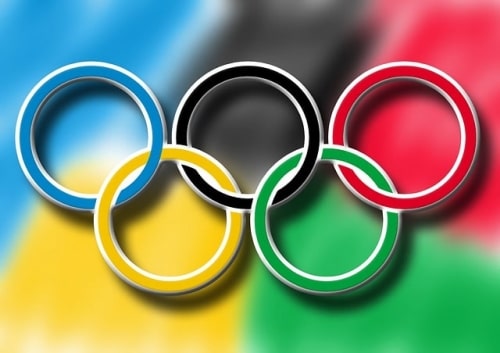Olympic Volleyball History

Volleyball has evolved into one of the most popular sports globally, with its inclusion in the Olympic Games significantly contributing to its prominence. The journey of volleyball from its origins to the Olympic stage highlights the sport’s growth, global appeal and its transformative impact on athletes and fans alike.
This article explores the history of volleyball’s inclusion in the Olympics, the development of both indoor and beach volleyball, and the lasting impact it has had on the sport.
Origins of Volleyball
Volleyball was invented in 1895 by William G. Morgan, a physical education director at the YMCA in Holyoke, Massachusetts. Originally called “Mintonette,” Morgan designed the game as a less intense alternative to basketball, combining elements from basketball, baseball, tennis and handball. It quickly gained popularity, especially in the United States and around the world, as it was easy to play both indoors and outdoors.
As volleyball spread globally, various organizations were formed to standardize the rules, promote the sport and organize international competitions. The creation of the Fédération Internationale de Volleyball (FIVB) in 1947 was a significant step in governing and popularizing volleyball on an international level.
The Inclusion of Volleyball in the Olympics
Volleyball’s journey to the Olympics began in the mid 20th century, as the FIVB worked to establish the sport as a legitimate Olympic discipline. The sport’s fast pace, strategic depth and high levels of athleticism made it an attractive candidate for Olympic inclusion. It was officially introduced as an Olympic sport in the 1964 Summer Games held in Tokyo, Japan.
Both men’s and women’s volleyball debuted at these Games, with the Soviet Union claiming the first ever men’s gold medal and Japan taking the gold in the women’s competition. The inclusion of volleyball in the Olympics marked a significant milestone for the sport, as it provided a global stage for athletes to compete at the highest level and brought worldwide attention to the game.
Growth and Evolution of Olympic Volleyball
Since its inclusion, Olympic volleyball has continued to grow in popularity, attracting a global fan base and elevating the profiles of volleyball players. Over the years, the format and rules of Olympic volleyball have evolved. The number of participating teams expanded, reflecting the sport’s growing international appeal.
From the original format of round-robin group stages and knockout rounds, the Olympic tournament structure became more competitive and dynamic, with the introduction of more sophisticated tactics, player specialization and faster, more powerful styles of play.
The Soviet Union dominated the early years of Olympic volleyball, but as the sport gained global popularity, teams from other countries started to rise. Nations like Brazil, Cuba and the United States have also left significant marks in both the men’s and women’s volleyball competitions. Brazil, in particular, has been a powerhouse in volleyball, consistently ranking among the top teams in the world and claiming multiple Olympic medals.
The 1990s saw significant changes in volleyball, particularly with the introduction of the rally point system, which replaced the traditional side-out scoring. This change made the game more fast paced and television friendly, helping volleyball to capture a broader audience during the Olympics.
Beach Volleyball Enters the Olympics
A pivotal moment in volleyball history was the inclusion of beach volleyball in the Olympic program. Beach volleyball, a variant of the indoor game, originated in the early 20th century on the beaches of California and Hawaii. By the 1980s, beach volleyball had become a popular competitive sport, with international tournaments attracting top players from around the world.
The International Olympic Committee (IOC) recognized the sport’s potential and officially introduced beach volleyball to the Olympic Games in Atlanta in 1996. With its sun soaked arenas, dynamic two player format and energetic atmosphere, beach volleyball quickly became a fan favorite.
The Brazilian duo of Sandra Pires and Jackie Silva won the first ever women’s beach volleyball gold, while the American pair of Karch Kiraly and Kent Steffes claimed gold in the men’s event.
Since then, beach volleyball has been a staple of the Summer Olympics, attracting millions of viewers worldwide. The game’s accessibility, coupled with its blend of power, agility and tactical intelligence, has captivated audiences, making it one of the most watched events at the Olympics.
Notable Moments in Olympic Volleyball
Over the decades, Olympic volleyball has delivered countless memorable moments. Some of the most iconic matches have shaped the sport’s legacy and captivated global audiences.
- Japan’s Women’s Team in 1964: Japan’s women’s volleyball team won the first ever Olympic gold in 1964. Known for their agility, teamwork and innovative tactics, the Japanese team became a national sensation and helped raise the profile of women’s sports globally.
- USA Men’s Team in 1984 and 1988: The United States men’s team, led by players like Karch Kiraly and Steve Timmons, won gold in 1984 and 1988, becoming the dominant force in volleyball during that era. Their victories popularized volleyball in the U.S., helping to foster a new generation of players and fans.
- Cuba’s Women’s Team in the 1990s: The Cuban women’s volleyball team, led by legendary players such as Mireya Luis, was a force to be reckoned with in the 1990s. They won three consecutive Olympic gold medals in 1992, 1996 and 2000, showcasing a powerful, athletic style of play that inspired many.
- Brazil’s Dominance in the 2000s: Brazil’s men’s and women’s teams have both been dominant forces in Olympic volleyball. The men’s team, led by players like Giba and Nalbert, won gold in 2004 and silver in 2008. The women’s team claimed their first ever Olympic gold in 2008 and successfully defended their title in 2012.
- The U.S. Beach Volleyball Dynasty: On the beach, the American duo of Misty May-Treanor and Kerri Walsh Jennings became the most successful beach volleyball team in Olympic history. They won three consecutive gold medals in 2004, 2008 and 2012, achieving near total dominance in the sport.
The Impact of Olympic Volleyball
The inclusion of volleyball in the Olympics has had a profound impact on the sport, elevating it from a recreational activity to a highly competitive, globally recognized discipline. Olympic volleyball has played a crucial role in expanding the sport’s reach, encouraging youth participation and inspiring future generations of athletes.
The visibility provided by the Olympics has also led to the growth of professional volleyball leagues and international competitions, further contributing to the sport’s global development.
In countries like Brazil, the U.S., Russia and Italy, volleyball enjoys a strong cultural presence, with millions of fans tuning in to watch their national teams compete on the Olympic stage. Moreover, the success of Olympic volleyball has led to increased investment in grassroots programs, coaching and infrastructure, helping to nurture talent at the local level.
In addition to its impact on the players and teams, Olympic volleyball has also provided a platform for showcasing gender equality in sports. Since its inception, both men’s and women’s volleyball have been included in the Olympics, with beach volleyball continuing this tradition of equal representation. This has helped promote female athletes and encourage greater participation in women’s sports worldwide.
Conclusion
The inclusion of volleyball in the Olympics has transformed the sport, providing a global platform for athletes and raising its profile worldwide. From its debut in 1964 to the modern day spectacle of beach volleyball, Olympic volleyball has captivated audiences and inspired generations of players.
The sport’s impact, both on and off the court, continues to grow as it remains a key feature of the Summer Olympic Games, cementing volleyball’s place as one of the world’s most beloved sports.


